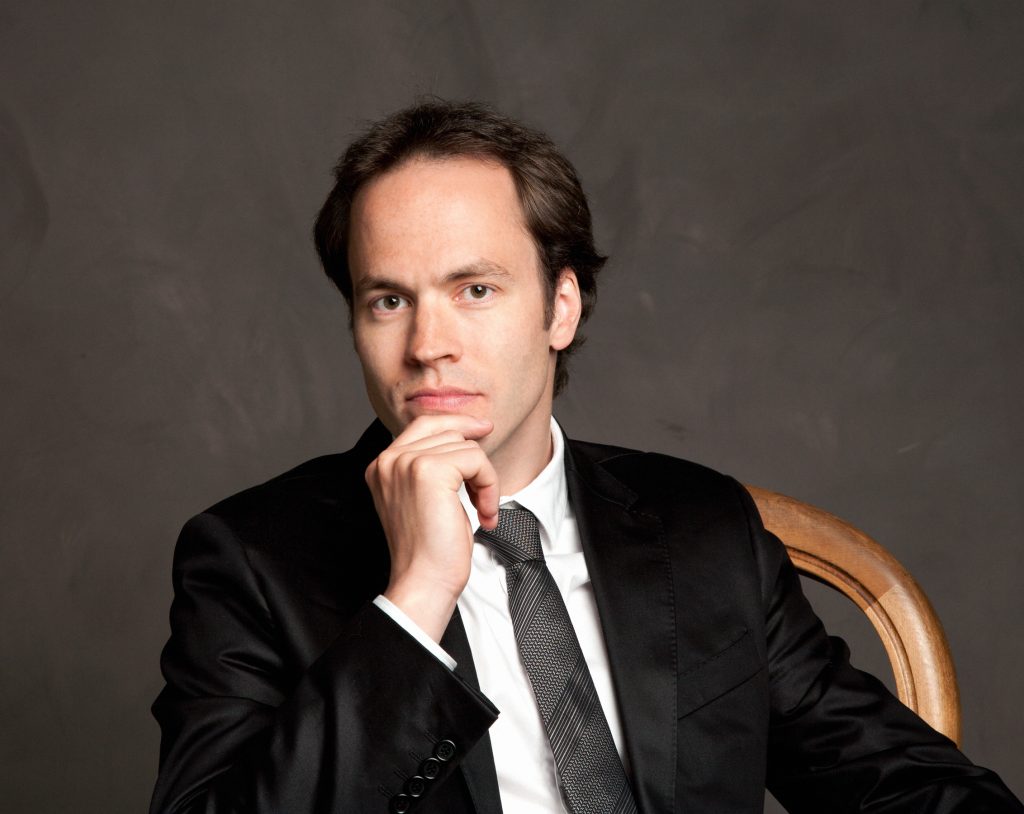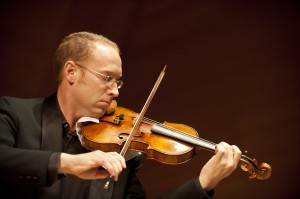Johannes Debus Conducts the San Diego Symphony in Compelling Dvořák Sixth Symphony
With the San Diego Symphony’s dazzling performance of Antonín Dvořák’s Sixth Symphony at Friday’s concert, Dvořák lovers in Copley Symphony Hall were no doubt left swooning. Guest conductor Johannes Debus led an exuberant yet superbly shaped account of the composer’s one mature symphony that stubbornly remains in the shadow of his mighty Eighth Symphony and beloved Ninth—the “New World.”

Johannes Debus [photo (c.) Tony Hauser]
Of course, all of the motivic material in Dvořák’s Sixth Symphony is his own, and his gift as a winning melodist may even surpass that of Schubert. But the Sixth Symphony lacks Brahms’ motivic connection and structural integration amid its thematic surfeit. For example, in the second movement Adagio, waves of caressing themes that suggest bucolic bliss are unexpectedly interrupted by dramatic, dark flourishes from the brass and timpani whose themes have no apparent connection to what preceded or what would follow, i.e. more pretty, quiet tunes. It is as if the composer thought, “I suppose I need contrast, so let’s toss in some noisy brass.”
Dvořák’s third movement Furiant, a vigorous traditional Czech dance in place of the usual scherzo, gives us the composer’s unique signature, and it is no surprise that this movement alone from the Sixth Symphony is known because it is so frequently excerpted.
The orchestra’s Adagio opened with ethereal strings cradling poignant solos from Principal Oboe Sarah Skuster and Principal Horn Benjamin Jaber. Throughout the Sixth, the composer lavished woodwind duets—two flutes, two oboes, two clarinets—with some of his most persuasive themes, and the symphony woodwinds delivered polished, ardent interpretations at every turn. Especially in the Finale, the trumpets and trombones—led by Acting Principal Trumpet Christopher Smith and Principal Trombone Kyle Covington—displayed unusual brilliance and sonic unity, which helped bring the Sixth to such a resounding conclusion.
Over the last three seasons, Debus has made several guest appearances with the San Diego Symphony, and it appears that he has engendered great rapport with the orchestra members. I hope the relaxed brilliance and ensemble clarity he evokes from the orchestra is something Music Director Designate Rafael Payare will also find and run with!
In addition to Dvořák’s Sixth Symphony, Friday’s program included Witold Lutoslavski’s 10-minute

Jeff Thayer (courtesy of the San Diego Symphony)
“Little Suite” (“Mala Suita”) and Mozart’s Violin Concerto No. 5 in A Major, K. 219, featuring Concertmaster Jeff Thayer as soloist. Thayer’s sweet, lithe timbre fit Mozart’s effervescent lines and arabesques superbly in the vibrant outer movements, and his admirable technique vanquished every sophisticated challenge. I particularly appreciated his subtly crafted phrasing and astute dynamic shadings in the lyrical middle movement. Debus’ well-chosen tempos and carefully scaled back size of the orchestra ensured a clean period style to this engaging, youthful Mozart composition.
In the post-Stalin era, Lutoslawski became one of Poland’s most lauded modernist composers, but in 1950 he was working under the strict censorship of Stalin’s lackeys who kept watch on all musical composition behind the Iron Curtain. For each of the four movements of his “Little Suite” the composer chose a traditional Polish folk song—folk songs formed a musical category which always had Stalin’s approval—and arranged them for orchestra with as much sophistication and surprise as he thought he could sneak by the music censors. Debus and the orchestra gave this work a clean but slightly swaggering performance that honored both the origins of the music and the composer’s intent to sneer at his censors.
To the printed program, members of the orchestra’s string section added one movement of a Georg Philipp Telemann Viola Concerto to honor the memory of Thomas Morgan, a 30-year veteran of the San Diego Symphony viola section who passed away unexpectedly on October 21, 2018. They played without conductor, allowing the front stands of the viola section to play the solo viola line. It proved an eloquent, fitting tribute.
This concert was presented by the San Diego Symphony at the Jacobs Music Center’s Copley Symphony Hall in downtown San Diego on Friday, November 30, 2018, and will be repeated on Sunday, December 2, 2018.


